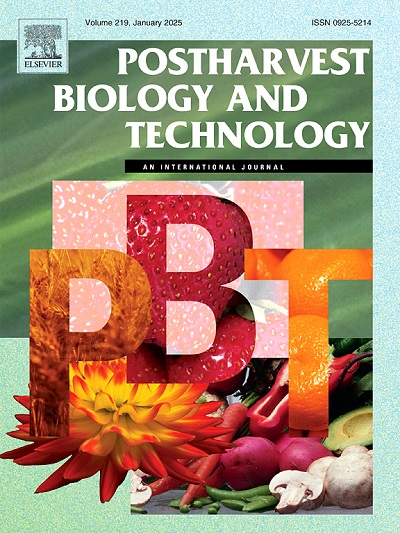Inhibitory effect of 2-methylvaleraldehyde on Botrytis cinerea and its application in postharvest strawberry
IF 6.8
1区 农林科学
Q1 AGRONOMY
引用次数: 0
Abstract
Gray mold, caused by Botrytis cinerea, is a prevalent postharvest strawberry disease. Biocontrol of plant diseases represents an alternative to the application of fungicides. This study investigated the biocontrol efficacy and potential mechanism of 2-methylvaleraldehyde, a microbial volatile compound, against B. cinerea and identified suitable gels for its sustained release. The results showed that 2-methylvaleraldehyde inhibited mycelial growth and spore germination, destroyed cell wall and membrane integrity, and induced ROS accumulation and apoptosis in B. cinerea. Additionally, it activated the expression of PR genes in strawberry. Transcriptome analysis showed that 2-methylvaleraldehyde regulated the expression of genes involved in cell wall and membrane synthesis, and DNA biosynthesis. Moreover, starch and hypromellose were found to be suitable gels for releasing 2-methylvaleraldehyde, and these gels with 2-methylvaleraldehyde could effectively prevent B. cinerea-induced strawberry gray mold, similar to 2-methylvaleraldehyde fumigation. These findings suggest that 2-methylvaleraldehyde is a promising fumigant against B. cinerea and that starch or hypromellose gels with 2-methylvaleraldehyde can be used to control gray mold in postharvest strawberry.
2-甲基戊醛对草莓灰霉病菌的抑制作用及其在采后草莓中的应用
灰霉病是草莓采后常见的一种病害,由灰霉菌引起。植物病害的生物防治是使用杀菌剂的另一种选择。研究了微生物挥发性化合物2-甲基戊醛对灰霉病菌的生物防治效果和可能的作用机制,并确定了其缓释凝胶。结果表明,2-甲基戊醛抑制葡萄球菌菌丝生长和孢子萌发,破坏细胞壁和细胞膜完整性,诱导活性氧积累和细胞凋亡。激活了草莓中PR基因的表达。转录组分析显示,2-甲基戊醛调节细胞壁和细胞膜合成及DNA生物合成相关基因的表达。此外,淀粉和羟丙醛是较适合释放2-甲基戊醛的凝胶,与2-甲基戊醛一起释放的凝胶可以有效地预防灰霉菌,效果与2-甲基戊醛熏蒸效果相似。上述结果表明,2-甲基戊醛是一种很有前途的防灰霉熏蒸剂,含有2-甲基戊醛的淀粉或羟丙纤维素凝胶可用于草莓采后灰霉病的防治。
本文章由计算机程序翻译,如有差异,请以英文原文为准。
求助全文
约1分钟内获得全文
求助全文
来源期刊

Postharvest Biology and Technology
农林科学-农艺学
CiteScore
12.00
自引率
11.40%
发文量
309
审稿时长
38 days
期刊介绍:
The journal is devoted exclusively to the publication of original papers, review articles and frontiers articles on biological and technological postharvest research. This includes the areas of postharvest storage, treatments and underpinning mechanisms, quality evaluation, packaging, handling and distribution of fresh horticultural crops including fruit, vegetables, flowers and nuts, but excluding grains, seeds and forages.
Papers reporting novel insights from fundamental and interdisciplinary research will be particularly encouraged. These disciplines include systems biology, bioinformatics, entomology, plant physiology, plant pathology, (bio)chemistry, engineering, modelling, and technologies for nondestructive testing.
Manuscripts on fresh food crops that will be further processed after postharvest storage, or on food processes beyond refrigeration, packaging and minimal processing will not be considered.
 求助内容:
求助内容: 应助结果提醒方式:
应助结果提醒方式:


